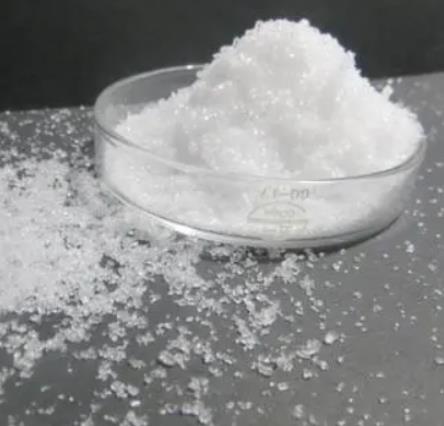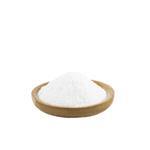Edaravone: A Breakthrough in Neurological Therapeutics
Jul 8,2024
Introduction
Edaravone, a potent free radical scavenger, has garnered significant attention in the field of neurological therapeutics. Initially developed and approved in Japan for the treatment of acute cerebral infarction, Edaravone's therapeutic potential has since extended to other neurological conditions, most notably amyotrophic lateral sclerosis (ALS). This article aims to provide a comprehensive overview of Edaravone, focusing on its chemical properties, primary components, applications, and storage requirements.

Figure 1 Characteristics of Edaravone
Properties
Edaravone, chemically known as 3-methyl-1-phenyl-2-pyrazolin-5-one, is a small, lipophilic molecule. Its molecular formula is C10H10N2O, with a molecular weight of 174.20 g/mol. The compound exhibits antioxidant properties by scavenging free radicals, thereby mitigating oxidative stress, which is implicated in neuronal damage.
Edaravone is characterized by its high solubility in organic solvents such as ethanol, methanol, and dimethyl sulfoxide (DMSO), but it is sparingly soluble in water. This solubility profile necessitates careful formulation for therapeutic use, ensuring adequate bioavailability while maintaining stability.
Major Components
The primary active component of Edaravone is the pyrazolone derivative itself, 3-methyl-1-phenyl-2-pyrazolin-5-one. This compound operates at a molecular level by neutralizing free radicals, particularly hydroxyl radicals, which are highly reactive and detrimental to cellular components. The structural configuration of Edaravone allows it to interact effectively with these radicals, preventing lipid peroxidation and preserving cellular integrity.
Additionally, Edaravone formulations often include excipients that enhance its solubility and stability. Common excipients include cyclodextrins, which form inclusion complexes with Edaravone, improving its aqueous solubility and facilitating its administration in clinical settings.
Uses
Treatment of Acute Cerebral Infarction
Edaravone was first approved in Japan in 2001 for the treatment of acute cerebral infarction, commonly known as ischemic stroke. The drug's ability to mitigate oxidative stress in the brain was pivotal in this approval. Clinical studies demonstrated that Edaravone could reduce infarct size and improve neurological outcomes when administered within 24 hours of stroke onset. Its neuroprotective effects are attributed to the scavenging of free radicals generated during reperfusion, a process that can exacerbate neuronal injury following ischemia.
Amyotrophic Lateral Sclerosis (ALS)
In 2017, Edaravone received FDA approval for the treatment of ALS, a progressive neurodegenerative disease affecting motor neurons. ALS is characterized by the accumulation of oxidative damage in motor neurons, leading to their degeneration. Edaravone's antioxidant properties help in slowing the progression of ALS by reducing oxidative stress, thereby preserving motor neuron function for a longer duration. Clinical trials have shown that Edaravone can slow the decline in physical function in ALS patients, providing a significant therapeutic benefit.
Potential Applications in Other Neurological Disorders
Beyond stroke and ALS, Edaravone is being investigated for its potential in treating other neurological conditions where oxidative stress plays a crucial role. These include neurodegenerative diseases such as Parkinson's disease, Alzheimer's disease, and multiple sclerosis. Preclinical studies have shown promising results, indicating that Edaravone could mitigate oxidative damage in various models of these diseases. However, further clinical trials are necessary to establish its efficacy and safety in these conditions.
Storage Methods
Proper storage of Edaravone is essential to maintain its stability and efficacy. The compound should be stored in a cool, dry place, away from direct sunlight and moisture. Ideal storage conditions typically involve temperatures between 2°C and 8°C. For pharmaceutical formulations, Edaravone is often supplied in sealed vials or ampoules, protecting it from air and light, which can degrade the active ingredient.
When prepared for intravenous administration, Edaravone solutions should be used promptly to avoid degradation. If necessary, prepared solutions can be stored under refrigeration for a limited period, usually not exceeding 24 hours. It is crucial to adhere to the manufacturer's guidelines for storage and handling to ensure the drug's integrity and therapeutic effectiveness.
Conclusion
Edaravone represents a significant advancement in the treatment of neurological disorders, particularly those associated with oxidative stress. Its unique properties as a free radical scavenger have established it as a critical therapeutic agent for acute cerebral infarction and amyotrophic lateral sclerosis. Ongoing research continues to explore its potential applications in other neurological conditions, promising broader therapeutic utility.
![]() References
References
[1] Rothstein J D. Edaravone: a new drug approved for ALS[J]. Cell, 2017, 171(4): 725.
[2] Watanabe T, Tahara M, Todo S. The novel antioxidant edaravone: from bench to bedside[J]. Cardiovascular therapeutics, 2008, 26(2): 101-114.
- Related articles
- Related Qustion
Betaine, has garnered significant attention in the chemical and biochemical fields due to its versatile applications and benefits.....
Jul 8,2024APICalcium formate has found significant applications across various industries, including construction, animal feed, and leather tanning.....
Jul 8,2024APIYou may like
- Lidocaine synthesis
Jul 30, 2024
- 4-Bromobiphenyl: Electronic Properties and Toxicity
Jul 30, 2024
- Valerophenone: Reactivity and Safety
Jul 30, 2024
5-Methyl-2-phenyl-1,2-dihydropyrazol-3-one manufacturers
- Edaravone
-

- $10.70 / 1Kg/Bag
- 2024-07-25
- CAS:89-25-8
- Min. Order: 10KG
- Purity: 99%
- Supply Ability: 10000kg
- 5-Methyl-2-phenyl-1,2-dihydropyrazol-3-one
-

- $0.00 / 1Kg/Drum
- 2024-07-25
- CAS:89-25-8
- Min. Order: 100g
- Purity: 99%min
- Supply Ability: 10KGS
- 5-Methyl-2-phenyl-1,2-dihydropyrazol-3-one
-

- $6.00 / 1kg
- 2024-07-10
- CAS:89-25-8
- Min. Order: 1kg
- Purity: More than 99%
- Supply Ability: 2000KG/Month




